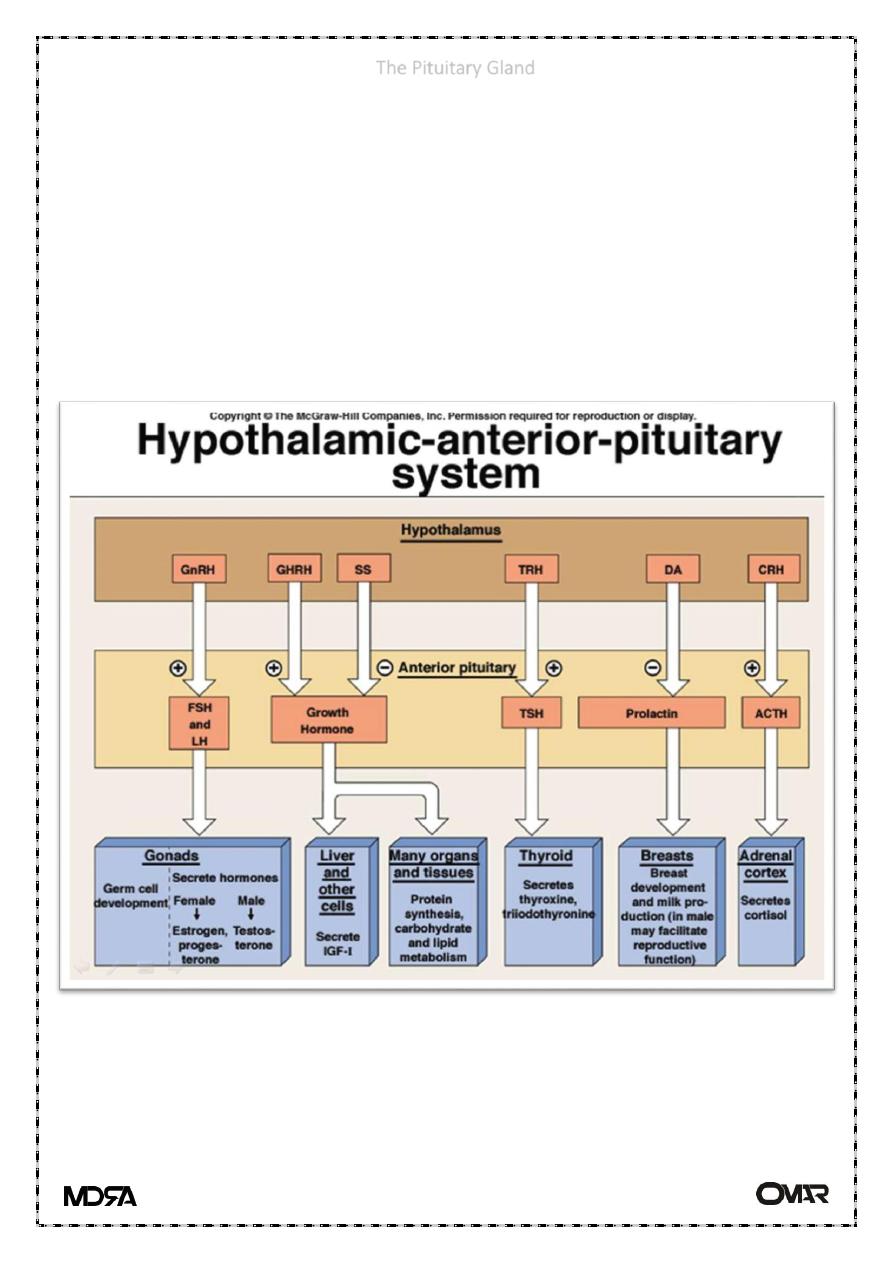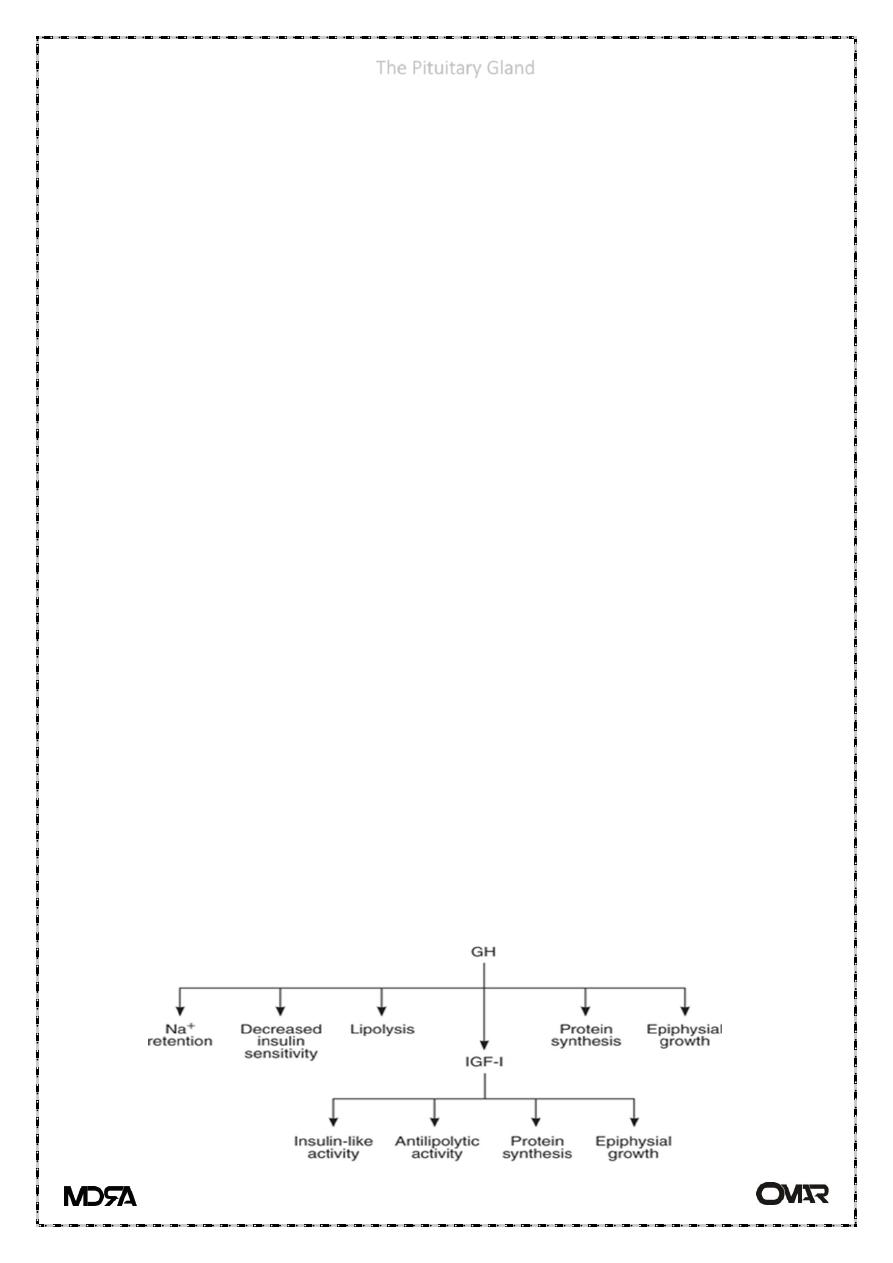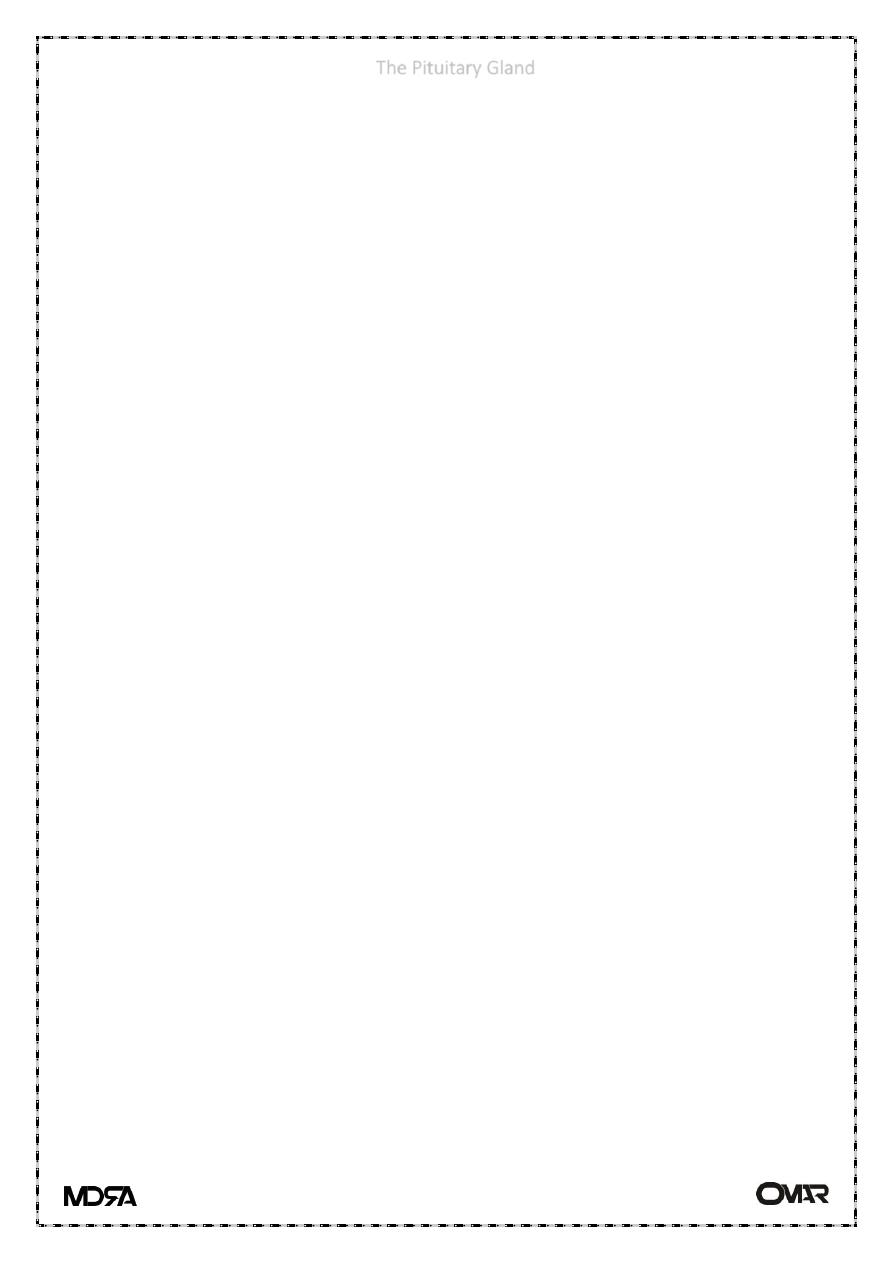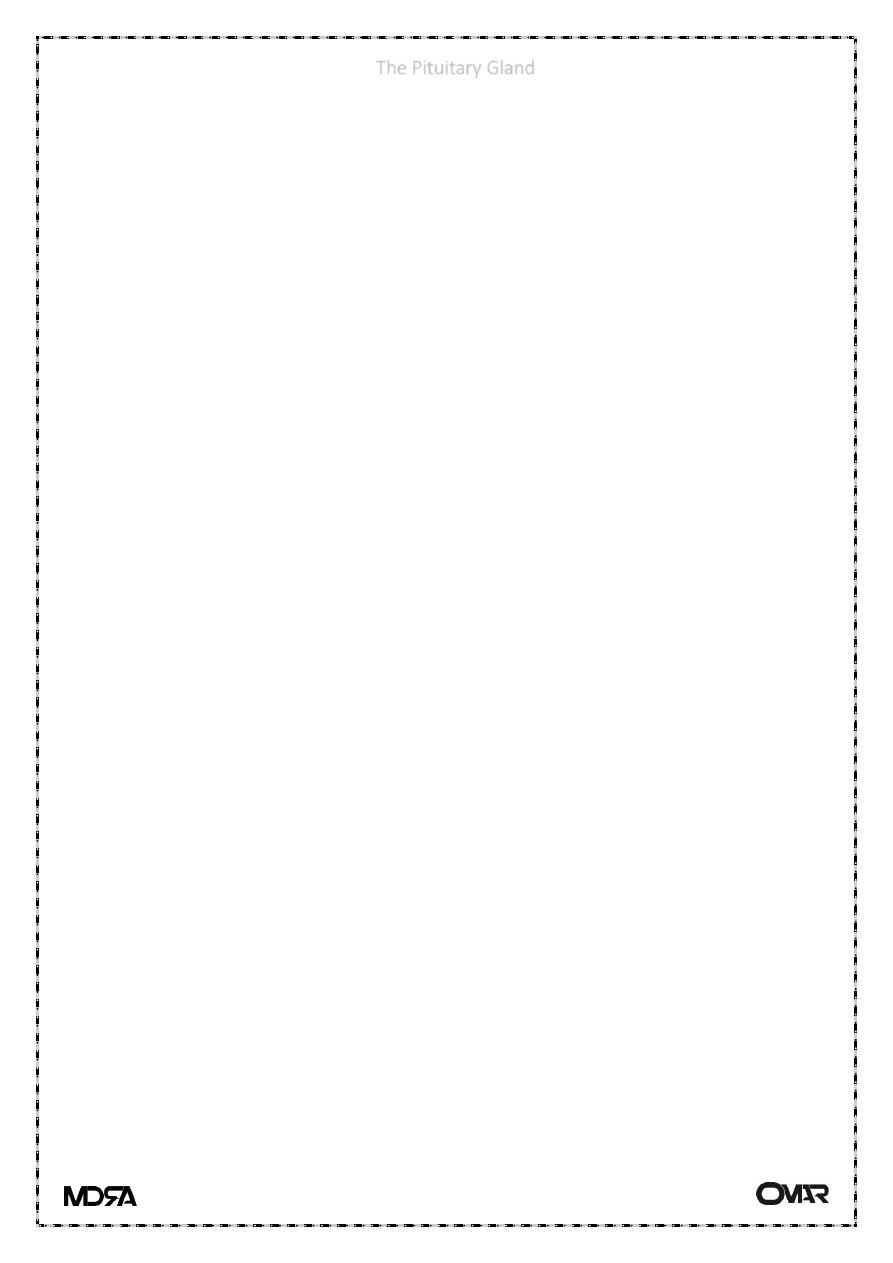
The Pituitary Gland
lecture 3
1
The anterior lobe
• The anterior pituitary secretes
• thyroid-stimulating hormone (TSH, thyrotropin),
• adrenocorticotropic hormone (ACTH), luteinizing hormone (LH),
• follicle-stimulating hormone (FSH),
• prolactin,
• and growth hormone
• The gland receives almost all of its blood supply from the portal
hypophysial vessels that pass initially through the median eminence, a
structure immediately below the hypothalamus

The Pituitary Gland
lecture 3
2
• prolactin acts on the breast.
• The remaining five are, at least in part, tropic hormones; that is, they
stimulate secretion of hormonally active substances by other endocrine
glands or, in the case of growth hormone, the liver and other tissues
Growth hormone
Plasma Levels, Binding, & Metabolism
• 50% of the circulating pool of growth hormone activity is in the bound
form.
adult humans is normally less than 3 ng/mL
• represents both the protein-bound and free forms
• Growth hormone is metabolized rapidly, probably at least in part in the
liver
• half-life of circulating growth hormone in humans is
• 6–20 min, and the daily growth hormone output is
• 0.2–1.0 mg/d in adults.
Effects on Protein & Electrolyte Metabolism
• is a protein anabolic hormone and produces :
• 1-positive nitrogen and phosphorus balance,
• 2- ↑Gastrointestinal absorption of Ca
2+
.
• 3-Na
+
and K
+
excretion is ↓by an action independent of the adrenal
glands,

The Pituitary Gland
lecture 3
3
Effects on Carbohydrate & Fat Metabolism
• growth hormone are diabetogenic because they : 1- increase hepatic
glucose output and exert an anti-insulin effect in muscle.
• 2- GH is ketogenic and increases circulating free fatty acid (FFA) levels.
• 3-GH not stimulate beta cells of the pancreas directly, but it increases the
ability of the pancreas to respond to insulinogenic stimuli such as arginine
and glucose.
• This is an additional way growth hormone promotes growth, since insulin
has a protein anabolic effect
Somatomedins
• The effects of growth hormone on growth, cartilage, and protein
metabolism depend on an interaction between growth hormone and
somatomedins, which are polypeptide growth factors secreted by the
liver and other tissues.
• they are members of an increasingly large family of growth factors that
affect many different tissues and organs.
• The principal circulating somatomedins are insulin-like growth factor I
(IGF-I, somatomedin C)
• and insulin-like growth factor II (IGF-II).
• These factors are closely related to insulin
• The IGF-I receptor is very similar to the insulin receptor and probably uses
similar or identical intracellular signaling pathways
Direct & Indirect Actions of Growth Hormone
• growth hormone and somatomedins can act both in cooperation and
independently to stimulate pathways that lead to growth.
• growth hormone probably combines with circulating and locally
produced IGF-I in various proportions to produce different effects in
different tissues.

The Pituitary Gland
lecture 3
4
Hypothalamic & Peripheral Control of Growth Hormone Secretion
• 1-hypothalamus controls growth hormone production by secreting growth
hormone-releasing hormone (GHRH) &somatostatin,
• 2-the balance between the effects of these hypothalamic factors on the
pituitary will determine the level of growth hormone release.
• 3-third regulator of growth hormone secretion is ghrelin (synthesis and
secretion in the stomach) , but it is also produced in the hypothalamus and
has marked growth hormone-stimulating activity.
• In addition, it appears to be involved in the regulation of food intake.
Feedback control
• Growth hormone secretion is under feedback control.
• 1-It acts on the hypothalamus to antagonize GHRH release.
• 2-GH also increases circulating IGF-I, and IGF-I in turn exerts a direct
inhibitory action on growth hormone secretion from the pituitary. 3-It
also stimulates somatostatin secretion
About G H
• 1- secretion of GH is not stable over time.
• 2- Adolescents have the highest circulating levels of GH ,then children,
then adults.
• 3- There are also diurnal variations in growth hormone secretion
superimposed on these developmental stages
• 4- GH is found at relatively low levels during the day.
• 5- During sleep, large pulsatile bursts of growth hormone secretion occur.
• 6- basal plasma growth hormone concentration ranges from 0–3 ng/mL
in normal adults.

The Pituitary Gland
lecture 3
5
Stimuli Affecting Growth Hormone Secretion
• 1) conditions such as hypoglycemia and fasting in which there is an actual
or threatened decrease in the substrate for energy production in cells,
• (2) conditions in which the amounts of certain amino acids are increased
in the plasma,
• (3) stressful stimuli.
• The response to glucagon has been used as a test of growth hormone
reserve.
Stimuli that decrease secretion
REM sleep
Glucose
Cortisol
FFA
Medroxyprogesterone
Growth hormone and IGF-I
Growth Periods
• two periods of rapid growth occur:
• 1- in infancy
• 2- in late puberty just before growth stops, growth is due to GH,
androgens, and estrogens
• subsequent cessation of growth is due to closure of the epiphyses in the
long bones by estrogens
